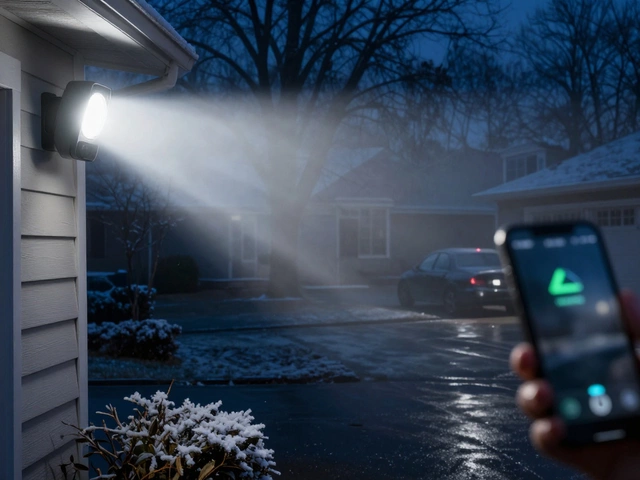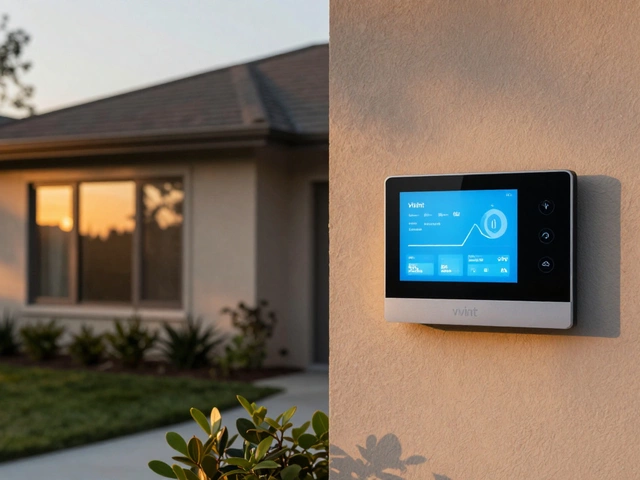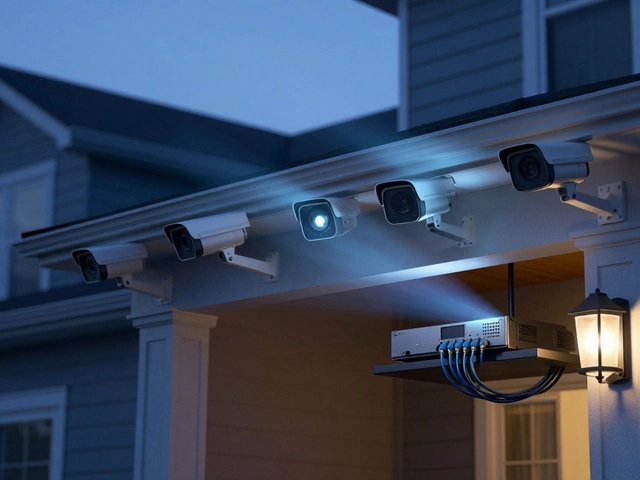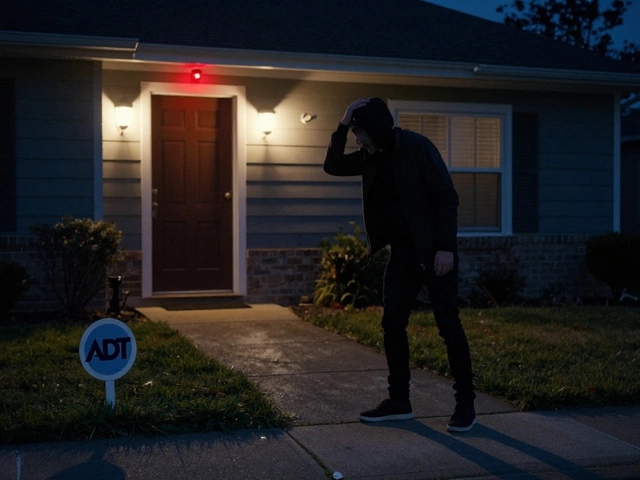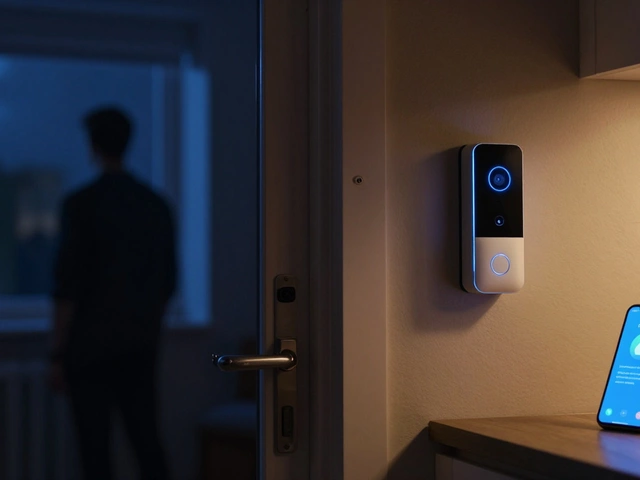Ever had one of those moments where you confidently walk outside, expecting the warm glow of your motion sensor lights to greet you, only to be left standing in the dark like some surprised raccoon? Yeah, motion sensor lights are awesome—until they’re not. When they decide to stop working, it’s frustrating, especially when you’ve come to rely on them. So, what's the scoop?
Most of the time, the problem is a minor glitch or mishap that impacts the sensor’s ability to do its job. It could be as simple as a loose wire, an obstructed sensor, or even a power surge. Other times, Mother Nature might interfere—like a windy day swaying a branch right in front of the sensor, confusing its tiny robotic brain.
If you find yourself caught in the literal spotlight with a malfunction, diagnosing the problem is usually your first step. It's often worth checking the easy stuff first—batteries, power sources, and sensor settings. And hey, sometimes it just takes a quick wipe, cleaning any dirt or grime off the sensor, restoring its eagle-eyed vigilance.
- Common Problems with Motion Sensor Lights
- Troubleshooting Solutions
- Upgrading and Replacing Sensors
- Choosing the Right Motion Sensor Lights
Common Problems with Motion Sensor Lights
Motion sensor lights are like your home's personal watchmen, but even these gadgets can hit a rough patch now and then. The first culprit in many cases is power issues. If your lights aren't turning on, it's worth checking if they're getting electricity at all. A blown fuse, tripped breaker, or even a dead bulb could be leaving you in the dark.
Another common gremlin in the system is sensor misalignment or obstruction. If you've moved your sensor from its original posh spot, there may be blind spots or areas it can't cover anymore. Even something as simple as a pesky spider web can trick a sensor into thinking it saw movement when it didn't.
Then there's the issue with sensitivity and range settings on your motion sensor lights. Some days they flick on when a moth flutters by, and other times, they ignore a marching band. Getting the settings just right is key. If sensitivity is set too high, the lights might turn on for the slightest leaf blow.
And, of course, sensors can get moody in extreme weather. Cold snaps or blazing heat can affect how well they function. In colder regions, batteries can drain faster, leading to inconsistent performance. A little maintenance can go a long way. If you live somewhere with weather on the wild side, consider getting sensors rated for those conditions.
Finally, the pesky ‘old technology’ syndrome. Yep, if you've been using the same motion sensor lights for years, it might just be time for an upgrade. Newer models are often more reliable and energy-efficient, sparing you from the headache of constant troubleshooting.
Addressing these issues isn't just techy mumbo-jumbo—ensuring your motion detector issues are resolved can make your home more secure and convenient.
Troubleshooting Solutions
Alright, so your trusty motion sensor lights have gone rogue. It's time to roll up those sleeves and get to the bottom of it. Luckily, most problems have straightforward fixes you can handle yourself without needing a degree in engineering.
First up, let's address the power issue. If your lights aren't coming on at all, the problem might be as simple as a dead battery or a tripped circuit breaker. Make sure your power source isn't the culprit by checking the circuit breaker and replacing any old or drained batteries with fresh ones.
Next, take a look at the sensor itself. Dirt or cobwebs can block the sensor, and even the best sensors can get confused if they're dirty. Give the sensor a gentle clean using a soft cloth. Be careful not to scratch the surface as this might make things worse.
Temperature swings can also play tricks on motion detector efficiency. While unlikely in most home settings, extreme weather can cause sensors to act a little wonky. Make sure your motion sensor is not aimed at anything that can heat up or cool down rapidly, like air vents or metal surfaces.
If you're dealing with lights that flicker or come on when there's no apparent movement, you may need to adjust your sensor settings. Occasionally, sensors just need a little recalibration. Most motion sensors have sensitivity controls, allowing you to tweak how easily they react. Try reducing the sensitivity if it's picking up unwanted motion, like that of a tree branch or neighborhood cat.
If the problem persists, consider checking if your motion sensor lights have an override function. Sometimes, during installation or use, the lights might get stuck in the manual-on mode. Flipping the switch off for about 10 seconds to reset them usually does the trick.
Lastly, if you've tried all the above and your lights still aren't cooperating, it might be time to face the fact that technology can have a shelf life. Your sensors could be a bit too ancient in tech years. Upgrading to a new, more reliable model might save you hours of unnecessary troubleshooting in the future.
Having some basic troubleshooting skills under your belt can be a lifesaver. When handled smartly, you'll be the one leaving those backyard raccoons surprised and in the dark.

Upgrading and Replacing Sensors
Sometimes the fix for a stubborn motion sensor light is simply swapping it out for a newer model. Technology moves fast, and what was cutting-edge a few years ago might seem like ancient tech today. If your motion sensor lights are acting up more often than they should, it might be time to consider an upgrade.
First, assess your current setup. Older lights can struggle with sensitivity and range issues that newer models have improved upon. Modern sensors often come with features like adjustable sensitivity, range settings, and even smartphone integration. It’s like getting a whole new toy to play with, but this one actually helps you see in the dark.
If you decide on replacing your existing sensors, here’s a simple guide:
- Turn Off the Power: Always safety first. Flip off the breaker to avoid any electric surprises.
- Remove Old Unit: Unscrew and gently take out the old fixture. Make sure to keep track of screws and mounting hardware.
- Install New Sensor: Follow the instructions provided with your new sensor. Usually, it involves connecting compatible wires and securing the device back in place.
- Testing: Once installed, test the range and sensitivity settings. Many new sensors allow you to tweak these directly on your smartphone—handy, right?
Here's a quick heads-up: not all sensors are created equal. While some older models might still have some life left in them, spending a bit more on a reliable, high-quality sensor can save you time and headaches in the long run. Look for those with good reviews, ideally ones that handle environmental changes well, like extreme temperatures or moisture.
Whether it’s for security or convenience, a solid investment in your light troubleshooting can make those late-night trips outside much more pleasant. Plus, with all the smart features available now, you might just find yourself playing around with app-controlled settings more than expected!
Choosing the Right Motion Sensor Lights
So, you’re in the market for new motion sensor lights, but with so many options out there, where do you even start? Well, don’t worry; we're breaking it down to make your decision a breeze.
First things first: consider where you’ll be installing these lights. Are they going above the garage, tucked around a dark alley, or highlighting your backyard? Different spots might need different light spreads or ranges. Check the sensor’s detection range — the distance where it can actually catch movement. You wouldn’t want a light that only turns on when someone’s almost at your doorstep.
Look for lights with adjustable settings. The ability to tweak the sensitivity level and how long the lights stay on are pretty handy features. It’s like giving your sensors some extra IQ points.
Another factor to consider is the power source. Do you want hassle-free wired setups, or do you prefer the flexibility of solar-powered lights? Solar-powered lights are great for areas with plenty of sunshine and can save you on the electric bill, while wired options are generally more reliable and don't have the sunny day dependency.
"A dependable motion sensor light is an investment in your peace of mind and safety," says lighting expert Jane Lau from Brightest Homes.
Finally, look into the light’s lumens. You want LED lights for energy efficiency, but the lumens will tell you how bright your light will actually be. A good range for outdoor lights is between 700 to 1300 lumens, depending on your specific needs. Go for higher lumens if you want your yard lit up like a Broadway stage.
Here’s a quick check-list to help you out:
- Location: Choose a light designed for your specific installation area.
- Sensitivity & Duration Controls: Adjustability is key.
- Power Source: Decide between wired, solar, or battery-operated.
- Lumens: Get the right brightness you need.
Picking the right motion detector light isn’t rocket science, but getting the right fit takes a bit of thought and consideration. Happy lighting!


